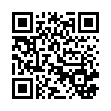poster (PDF)
File information
Title: Case Study Competition 8mm Analysis of a Uken Games mobile app -5mm
Author: Nathan Esau, Steve Kane
This PDF 1.5 document has been generated by LaTeX with Beamer class version 3.36 / pdfTeX-1.40.15, and has been sent on pdf-archive.com on 18/10/2016 at 05:55, from IP address 99.252.x.x.
The current document download page has been viewed 340 times.
File size: 1.28 MB (1 page).
Privacy: public file

File preview
Nathan Esau, Steve Kane
September 2015
Objectives
Case Study Competition
Analysis of a Uken Games mobile app
Figure 3: Stages played, engagement, revenue, player skill (bonuses completed)
Figure 4: Heatmap for distribution of players from around the world
1. Come up with a good way to visualize the
data that helps to provide explanatory
insights
2. Use the demographic and event features to
predict revenue, engagement and player
retention
3. Suggest control-treatment experiments for
follow up analysis
Predictions
Introduction
• We
used the random forest model to predict revenue and engagement since this
type of model works well with skewed data (Huang, 2005).
• The gradient boosted model was used to predict retention. This model performed
better than linear models we tried.
Size training set:
250,000 players
Size validation set: 50,000 players
Types of variables: Country, gender, dates
of in-game events, ingame purchases, prizes
won; about 40 variables
Table 1: Comparison of prediction mean and training mean
Revenue
Revenue measures the amount of money spent,
while Engagement measures the amount of time
spent in game. Retention indicates whether a
player plays the game 30 days after installation.
• Revenue
and engagement are heavily skewed
• 97.8% of players don’t spend money
• Given that players pay, the average is $3.33 with
only 5% paying more than $13.20
• The average time spent playing is 32.75, but the
median time spent playing is only 7.
• Retention: 9% of players returned 30 days later
Engagement Return Player
Validation Mean 3.31 | Revenue > 0 33.33
6.5%
3.33 | Revenue > 0 32.75
9.0%
Training Mean
Note that the random forest model predicts 0 revenue for most of the new players,
which is what we would expect.
Random Forest Model
Gradient Boosted Model
Figure 5: Simple decision tree
Figure 7: Error-complexity tradeoff
Conclusions
A/B tests to improve key metrics
• Figure
3 shows that completing bonus objectives is
likely to increase revenue. We expect that creating
additional stages or adjusting the difficulty of the
bonus objective could increase revenue.
• It would be interesting to analyze the impact of
providing unlockable features when a player the
game connects to Facebook or another device.
Figure 1: Important features for predicting revenue
Relationship of key metrics
Figure 6: A random forest
Figure 2: Important features for predicting engagement
• Stage
Count is highly significant to both
We update our model, F (x) = 0.5 log
engagement and revenue
by continually adding a new basis function to
• The types of games a player tries out is highly
minimize the loss function,
significant
to
engagement
−ˆ
yi
yˆi
l(yi, yˆi) = yi ln(1 + e ) + (1 − yi) ln(1 + e )
• The type of purchase a player made is very
The gradient boosted model uses a greedy algorithm. significant to revenue
1+¯
y
1−¯
y
References
We create an ensemble of many unstable models to
form a stable model.
Analysis was done using R. http://www.R-project.org. The ggplot2, randomForest, data.table, xgboost, readr,
qdapTools, and Matrix packages were used. For the models see Methods to Extract Rare Events by Weihua Huang. 2005.
Download poster
poster.pdf (PDF, 1.28 MB)
Download PDF
Share this file on social networks
Link to this page
Permanent link
Use the permanent link to the download page to share your document on Facebook, Twitter, LinkedIn, or directly with a contact by e-Mail, Messenger, Whatsapp, Line..
Short link
Use the short link to share your document on Twitter or by text message (SMS)
HTML Code
Copy the following HTML code to share your document on a Website or Blog
QR Code to this page

This file has been shared publicly by a user of PDF Archive.
Document ID: 0000495510.